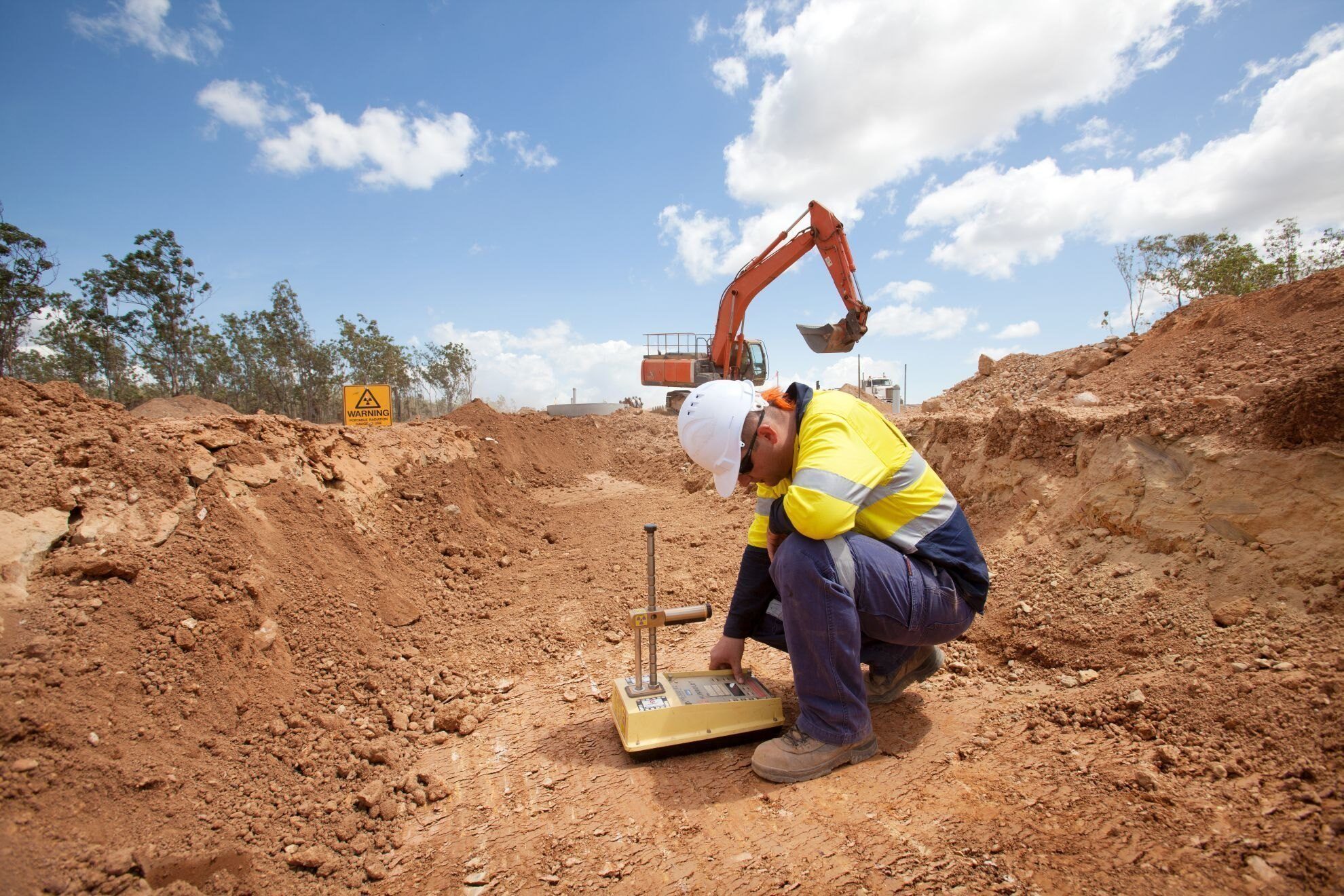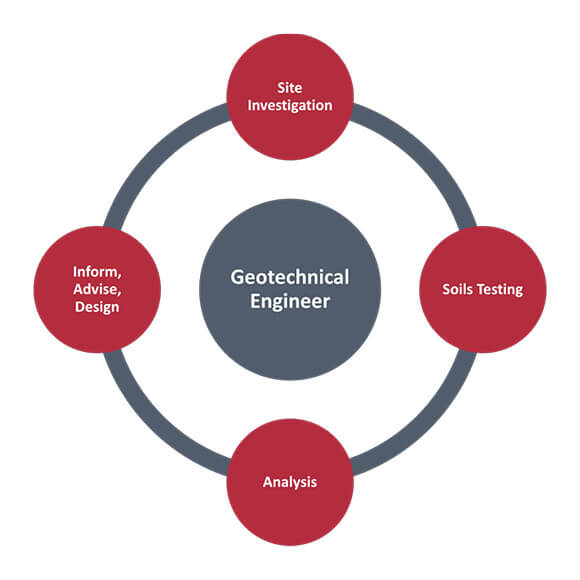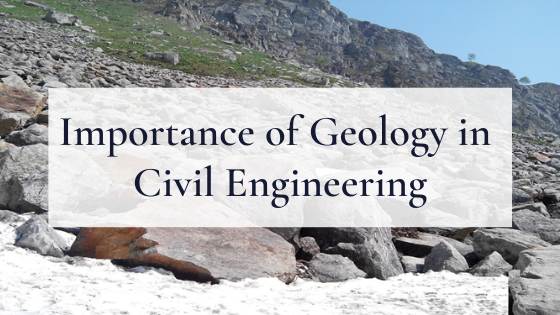How Geotechnical Engineering For Construction Projects can Save You Time, Stress, and Money.
How Geotechnical Engineering For Construction Projects can Save You Time, Stress, and Money.
Blog Article
The smart Trick of Geotechnical Engineering For Construction Projects That Nobody is Discussing
Table of ContentsThe smart Trick of Geotechnical Engineering For Construction Projects That Nobody is DiscussingGetting My Geotechnical Engineering For Construction Projects To WorkFacts About Geotechnical Engineering For Construction Projects RevealedThe 9-Minute Rule for Geotechnical Engineering For Construction ProjectsWhat Does Geotechnical Engineering For Construction Projects Mean?Fascination About Geotechnical Engineering For Construction ProjectsGeotechnical Engineering For Construction Projects Can Be Fun For Anyone
Concepts and Method of Ground Enhancement. Ground Improvement Principles And Applications In Asia. Style analysis in rock auto mechanics.Cengage Understanding, Stamford, 666 p. Atkinson, J., 2007. The auto mechanics of dirts and structures. Taylor & Francis, N.Y., 442 p. Floating Offshore Wind Generators: Reactions in a Sea state Pareto Optimal Designs and Financial Assessment, P. Sclavounos et al., October 2007. Nicholson, D, Tse, C and Cent, C. (1999 ). The Observational Technique in ground engineering principles and applications.
4 Easy Facts About Geotechnical Engineering For Construction Projects Shown
Research laboratory and area testing plays a vital role in this process. By removing examples from the earth's subsurface and applying a suite of examinations, geotechnical designers can predict the behavior of dirt layers and review their suitability for various construction efforts. The essence of geotechnical engineering in civil design can not be overemphasized, attributable to numerous variables: The initial action in any kind of geotechnical research involves establishing the soil type at the building site.
The structure acts as the bedrock of any type of building and construction job. Choosing the appropriate foundation kind is a decision that hinges on the comprehensive evaluation given by geotechnical engineering.

Geotechnical site investigation is an essential step in the preparation and execution of any kind of construction job. It includes the collection and evaluation of information related to the physical residential or commercial properties of soil and rock under a proposed construction site. This details is important for the design and building and construction of safe, stable, and lasting structures.
Not known Incorrect Statements About Geotechnical Engineering For Construction Projects
, additionally known as subsurface expedition, includes a series of tasks intended at figuring out the soil, rock, and groundwater conditions at a building site. The key goals are to determine prospective geotechnical hazards, assess the engineering residential or commercial properties of subsurface materials, and give referrals for the layout and building and construction of structures, maintaining walls, and various other structures.
This may consist of geological maps, airborne photographs, previous examination records, and historical data. The desk study assists in determining potential geotechnical concerns and preparing the subsequent fieldwork. Adhering to the desk research study, a website reconnaissance is performed to aesthetically evaluate the website and its surroundings. This entails observing the topography, drain patterns, existing structures, plant life, and any indications of instability or disintegration.
The Best Guide To Geotechnical Engineering For Construction Projects
Shallow test pits are excavated to straight observe and sample the soil and rock. This method works for researching the upper layers of the subsurface and determining near-surface risks. Non-invasive geophysical methods, such as seismic refraction, ground-penetrating radar (GPR), and electrical resistivity tomography (ERT), are made use of to map subsurface problems and discover anomalies.
Dirt and rock samples gathered throughout the area investigation are subjected to laboratory testing to identify their physical and mechanical homes. Common laboratory examinations consist of grain size evaluation, Atterberg limitations, compaction examinations, triaxial shear tests, and combination tests. These tests supply necessary information for geotechnical evaluation and design. The data gathered from the desk research, website reconnaissance, area examination, and lab testing are examined and analyzed to develop a detailed understanding of the subsurface conditions.
The primary benefit of geotechnical site investigation is making sure the safety and stability of frameworks. By recognizing the subsurface conditions, engineers can create foundations and other architectural elements that can endure the tons and environmental forces they will certainly go through. This reduces the threat Check This Out of negotiation, decrease, and structural failure.
The Geotechnical Engineering For Construction Projects Statements
For example, comprehending dirt characteristics can guide the selection of excavation strategies, dewatering approaches, and ground improvement steps. This guarantees effective and safe view publisher site construction practices. Geotechnical site examinations are commonly called for by building codes and regulations. Following these requirements guarantees compliance with legal and safety requirements, staying clear of prospective lawful responsibilities and job hold-ups.
This information is indispensable for project managers, engineers, and professionals in creating reasonable schedules, budget plans, and contingency strategies. Geotechnical Engineering for Construction Projects. Skyscraper in a Coastal AreaIn a coastal city, a skyscraper residential structure was prepared on a website with believed loose sand deposits and a high water table. An in-depth geotechnical investigation, including borehole drilling, CPT, and geophysical studies, was carried out
The smart Trick of Geotechnical Engineering For Construction Projects That Nobody is Talking About
Based upon these searchings for, the structure layout was customized to consist of deep pile foundations expanding into stable strata, and ground renovation strategies, such as vibro-compaction, were implemented to alleviate liquefaction dangers. This positive approach made certain the security and stability of the structure while avoiding expensive post-construction remediation. Infrastructure Development on a Sloping TerrainA major framework job, including the building of a highway and bridges, was prepared on a sloping surface with high slopes.

The Leaning Tower of Pisa (Italy), a renowned architectural marvel, is well known for its unexpected tilt from substantial geotechnical concerns. The tower's structure was inadequately made to deal with the soft, unstable dirt under it, causing unequal negotiation and its distinctive lean. Our world is dotted with outstanding framework projectsfrom looming high-rises to stretching bridgesall standing testament to the advancement of the numerous building and construction devices and methods available.
Geotechnical engineering is a specific area within civil engineering that concentrates on researching the behavior of earth materials. This branch delves deep into the groundinvestigating how the soil, rock, and groundwater at a building site can influenceand be influenced bythe infrastructure that we put up on and right into them. Prior to a single brick is laid or a concrete foundation put, geotechnical engineers probe right into the earthgathering critical information concerning the website's dirt her response make-up, rock framework, and groundwater levels.
The Greatest Guide To Geotechnical Engineering For Construction Projects

is a tool used to evaluate the stability and load-bearing ability of heaps throughout setup, leveraging the concept of wave breeding. It optimizes building and construction performance by providing real-time evaluations, thus guaranteeing secure and efficient heap structures. Among the useful applications of geotechnical design includes choosing and implementing the appropriate techniques for structure building and construction.
Stack driving represents even more than the mere act of putting architectural components right into the ground. On the other hand, it is a thoroughly orchestrated process of transferring a framework's load past the much less secure dirt layers better to the surfacedown to the more considerable strata that lie below. When it comes to heap driving, take into consideration exactly how geotechnical designers adeptly utilize this strategy to uniformly disperse the structure's weight.
Report this page